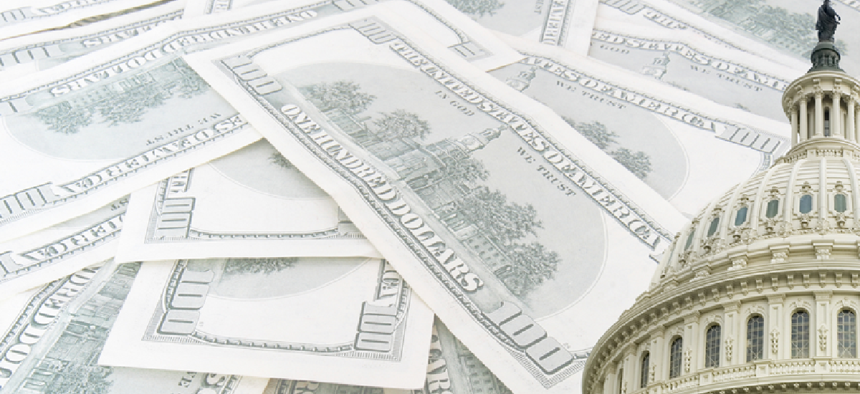House leaders push back against proposed FY21 spending cuts

Appropriators hope to beef up staffing, modernize operations and remove Confederate symbols from the Capitol.

House Appropriations subcommittees have made quick work of marking up their bills to fund federal programs and agencies for Fiscal Year 2021, and House Democrats have vowed to increase spending, pushing back against the White House’s proposed budget cuts.
On the afternoon of July 6, the State, Foreign Operations, and Related Programs Subcommittee quickly passed its bill via voice vote during a markup hearing and sent it to the full Appropriations Committee for consideration.
The bill would provide for almost $66 billion in funding to the U.S. Agency for International Development, the State Department, and other international-facing agencies and programs.
It also would provide for $10 billion in emergency funding to combat the COVID-19 virus, which as of July 7 has resulted in over 500,000 deaths worldwide and claimed over 130,000 U.S. lives, according to a Johns Hopkins University database.
USAID and its Office of Inspector General would receive $1.68 billion, while the State Department would receive $16.3 billion to support its base and overseas operations --substantially more than what the White House had asked for in its own budget request.
The bill specifically seeks to reverse a Trump Administration hiring freeze and allow USAID and the State Department to maintain its staffing levels on par with that of 2016 levels.
“With strong investments in humanitarian, economic, and development assistance, Congress is once again sending an unequivocal message to the President that irresponsible cuts to our foreign assistance programs will not stand,” House Appropriations Chairwoman Nita Lowey (D-N.Y.) said.
“This bill rejects the president’s go-it-alone approach to foreign policy and instead reaffirms our strong support for international allies, for reproductive health, climate change, and multilateral assistance, and for long-term investments in development and democracy.”
The House Homeland Security Subcommittee approved its bill during a July 7 markup. While that measure would increase spending for the Office of the Secretary of Homeland Security, it provides less for Immigration and Customs Enforcement (ICE) and Customs and Border Protection (CBP) than those agencies received for FY2020, and less than the White House requested.
CBP would receive $14.6 billion, with $171 million earmarked to hire 1,150 new personnel, including 850 CBP officers and 300 support staff and agricultural specialists. There would be no new funding to hire more Border Agents or build more border barriers.
ICE would receive $7.4 billion, mostly for enforcement and removal operations as well as funding to ensure that single adults in detention had enough beds, which lawmakers said was an especially important concern during the COVID-19 pandemic.
U.S. Citizenship and Immigration Services, which moving to furlough 75 percent of its workers due to declining revenue, would receive $183.9 million.
The Federal Emergency Management Agency would receive less money than in FY2020 but would see increases in funding for port and transit security and firefighter training. The Disaster Relief Fund would receive the funding that President Trump asked for in his budget request.
The Transportation Security Agency, which faces high rates of turnover, would receive $7.6 billion, mostly to continue funding personnel in secure exit areas, and for further enhanced screening and security equipment.
Lawmakers also made several policy requests in the DHS funding bill, such as being assured of access to detention facilities, assurance that no funding would be commandeered to construct a border wall, and assurance that migrant detainees in DHS custody would not be denied access to legal counsel, including pro-bono representation.
The Interior and Environment Subcommittee also passed its bill via voice vote on July 7 approving almost $14 billion for the Department of the Interior, with $1.3 billion set aside for the Bureau of Land Management and another $62 million for DOI’s Office of the Inspector General. The Environmental Protection Agency would receive $9.4 billion, with $45 million set aside for its own OIG.
The subcommittee also included a provision that would require the National Parks Service to remove all Confederate flags from its lands.
The Legislative Branch Subcommittee's bill includes a similar provision that would allow Congress to remove statues and busts of Confederate leaders from the Capitol in response to protests against racism that rocked Washington, D.C. and other parts of the country in June.
“The bill includes long overdue language directing the Architect to remove the statues or busts in the U.S. Capitol that represent figures who participated in the Confederate Army or government, as well as the statues of four white supremacists, including Roger B. Taney,” legislative branch subcommittee Chairman Tim Ryan (D-Ohio) said in his opening statement during the July 7 markup hearing. “I know this is part of a larger national debate that other Appropriations subcommittees will address, but we need to make a statement now on something we CAN control – the removal of statues that many visitors to the Capitol find offensive.”
The Labor, Health and Human Services, and Education Subcommittee’s bill, meanwhile, would give $12.7 billion to the Department of Labor, and specifically sets aside $1.7 billion for worker protection agencies such as the Occupational Safety and Health Administration and Office of Labor-Management Standards. That bill was approved late on July 7 by a vote of 9-6.
OSHA has faced backlash for not issuing binding emergency standards during the pandemic to force employers to adhere to specific protocols to protect workers from infectious disease in the workplace.
In addition, the subcommittee bill pledged to give more than $96 billion to HHS, $47 billion of which would go to the National Institute of Health, which has been one of several agencies coordinating the country’s response to COVID.
The Centers for Disease Control and Prevention would receive $8 billion, with an added $9 billion in emergency funding to cover health emergency preparedness, such as “epidemiologic and laboratory support” at various public health agencies, increased funding for modernizing public health data systems, and added funding for “public health workforce initiatives.”


